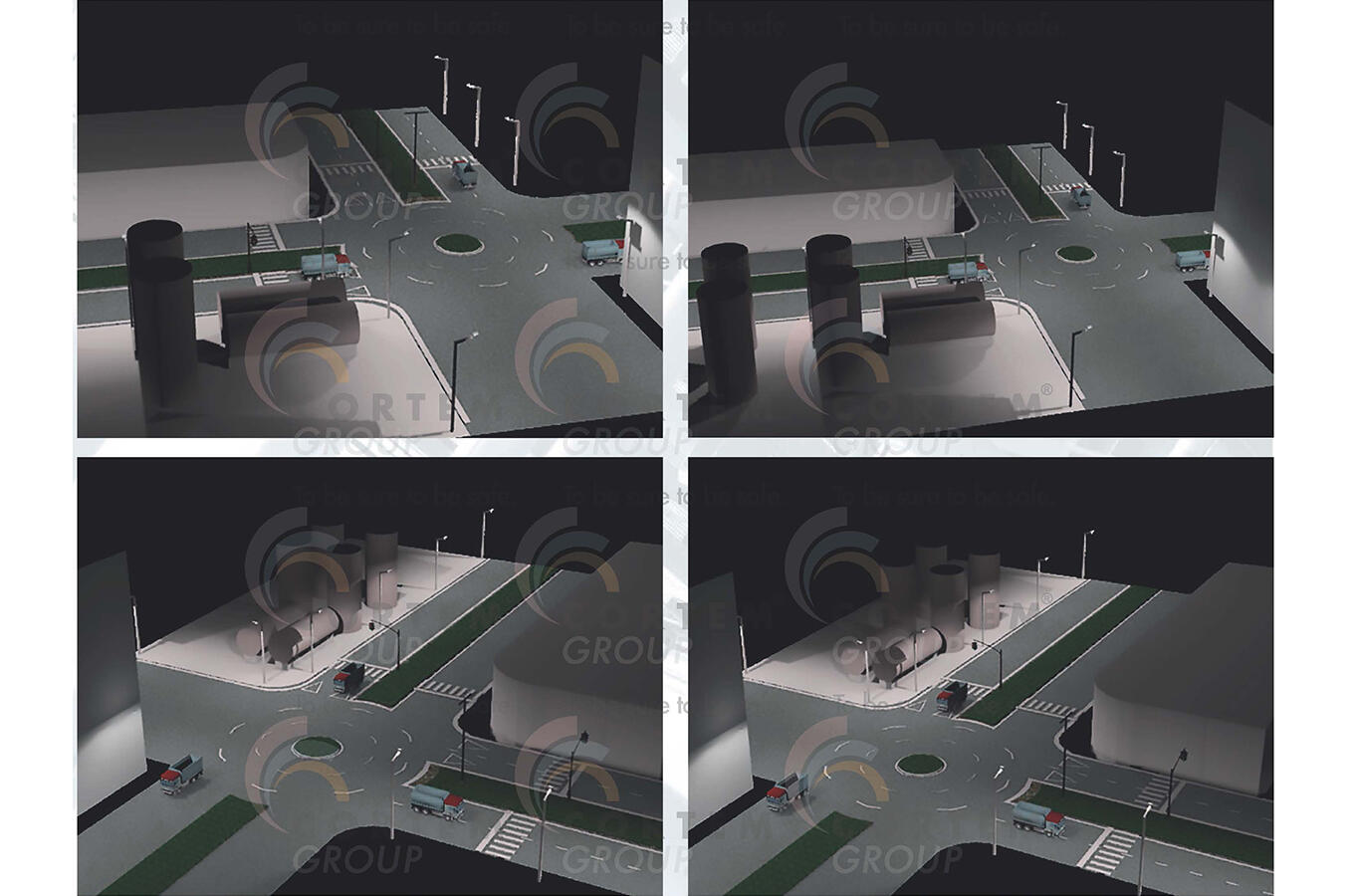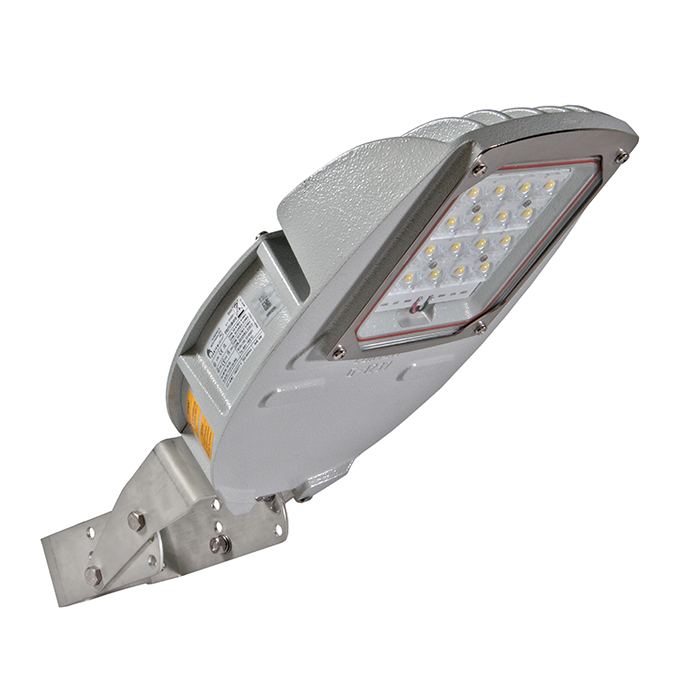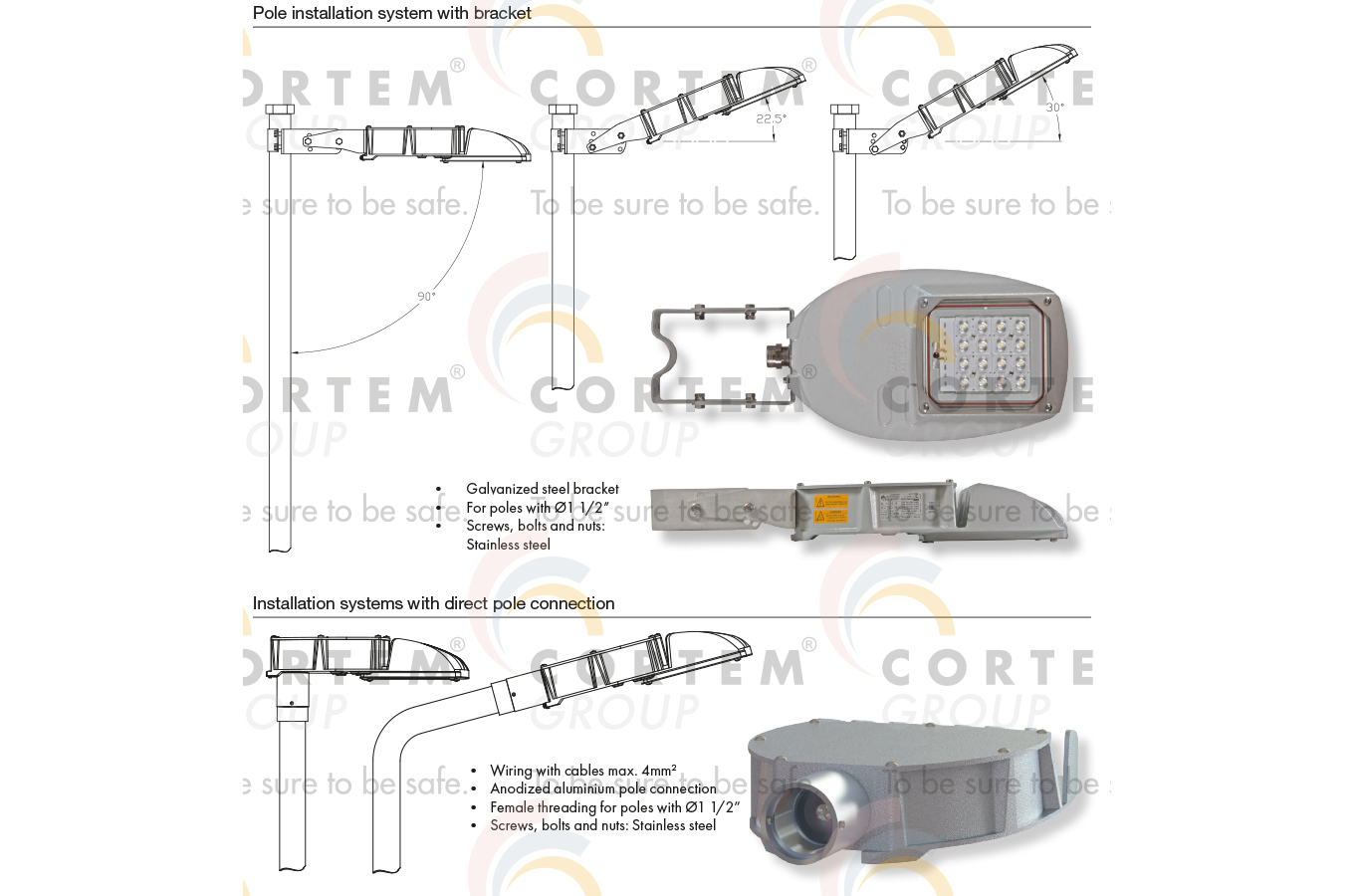Street lighting in areas classified as at risk of explosive atmosphere
Street lighting in areas at risk of explosion must minimize glare phenomena and have a luminous footprint on the ground characterized by homogeneous illumination without large peaks and shadow areas. To obtain a better result, the light emitted must have a greater luminous intensity on the sides rather than on the symmetry plane of the device. With the advent of LED technology this need is met by the use of so-called "secondary optics".
by Andrea Battauz, R&D Manager of Cortem Group
Premise
When we talk about street lighting, we mean the use of lamps specifically designed for the illumination of streets traveled by cars, trucks, and other vehicles. This type of lighting must face various critical issues due to the fact of having to minimize glare phenomena and maximize the uniformity of the illumination with lighting devices placed at distances equal to 3 or 4.5 times the height of the poles on which they are installed. [1]
It is therefore necessary to deal with complex lighting concepts such as luminance and average illuminance but, far from wanting to deal extensively with these concepts, let us try to analyze the use of this lighting in the context of areas classified as at risk of the formation of explosive atmospheres.
The advent of LED technology and the use of secondary optics
Bell-shaped lamps (high-bay) or narrow-beam light floodlights have an emission of light intensity that is substantially axisymmetric with respect to the axis of symmetry of the luminaire. This generates a peak in illuminance on the plane orthogonal to the symmetry axis.
Street lighting fixtures need to have a luminous footprint on the ground characterized by homogeneous illumination without large peaks and shadow areas. To obtain a better result, the light emitted by the luminaire must have a greater luminous intensity at the sides rather than on the symmetry plane of the luminaire.
To achieve this type of emission with traditional light sources (incandescent, neon tubes, discharge lamps) the lighting equipment required peculiar shapes that replicated the shape of the bulbs and reflectors housed inside them.
With the advent of LED technology this need is met using so-called "secondary optics". The LED, in fact, consists of a first lens, generally made of transparent silicone, placed immediately above the light-emitting diode (chip) which creates an axisymmetric emission of light with respect to its axis of symmetry. Different and asymmetric light distributions are obtained with the use of special secondary optics which exploit the principle of light refraction for distribution according to different patterns. The latter are arranged above the LEDs in single or modular configurations.

Fig. 1 Example of a photometric study for street and perimeter lighting with street lighting fixtures model STREETEX-MN-100200 installed on poles and walls.

The StreetEx series street lighting fixture
The new street lighting fixture StreetEx uses LED technology to meet sophisticated photometric needs in environments at risk of the formation of an explosive atmosphere classified as Zone 1, 2, 21 and 22. [2]
This product moves the management of the light footprint and illuminance uniformity to a higher level and is offered with three types of optics, compliant with IESNA Type I, III and V standards.

Fig. 3 IESNA optics available
IESNA type I and type III optics are ideal for distributing light on roads and paths, ensuring uniform coverage without excessive dispersion of light towards the sky and surrounding areas.
Normally in EPC projects [3] in the Oil & Gas sector the lamps used for illumination are often fixed on poles whose shape is influenced using old ceiling lights with neon tubes which have dominated the lighting market for decades.
The new StreetEx lighting fixtures with IESNA type I optics are suitable for mounting longitudinally to the axis of the pole, which in these applications is inclined by 15°, 22.5° or 30° with respect to the horizontal.
The configuration with IESNA type III optics enhances performance with the lamp mounted orthogonally to the pole. The characteristic asymmetric photometry of this optic ensures that the light is not emitted behind the pole, concentrating, and projecting the light in front of it.
Furthermore, for completeness, an optic compliant with the IESNA type V standard was provided with an opening of approximately 90° of the light beams.

Fig. 4 Installation methods of the StreetEx series
Conclusions
The new StreetEx lighting fixtures was created to meet the needs of street lighting, but its applications can range much more widely thanks to the quality of the LED light and the uniformity of the illuminance in the luminous footprint.
The use of optics with asymmetric emission is suitable for many applications, such as the lighting of areas with walkways, steps, and stairs. The use of these devices must push us to rethink the support structures, now possible with simple straight poles.
In addition to the structural simplification there will be a general improvement in all aspects concerning lighting, from the quality of light to the distribution of illuminance.
Notes, reference standards and bibliography
[1] Lighting – Gianni Forcolini pag. 408 - Hoepli Editions 2004
[2] The classification into zones is present in DIRECTIVE 1999/92/EC - ANNEX 1 (2)
[3] In the oil and gas industry, the acronym EPC stands for "Engineering, Procurement, and Construction".